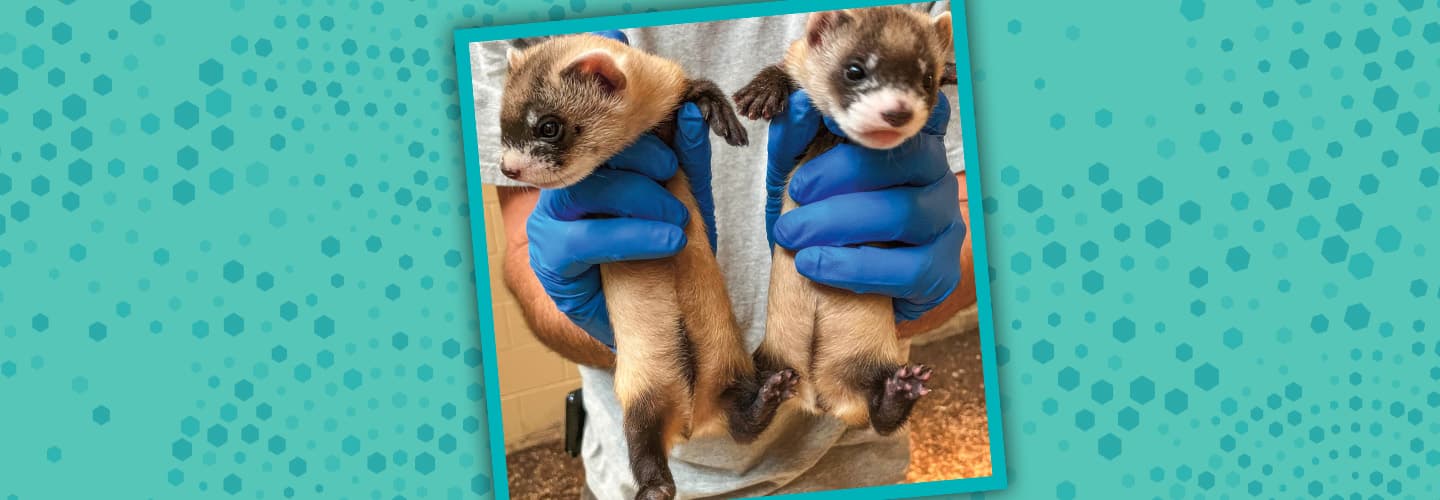Sibert and Red Cloud look like most black-footed ferrets. They have dark rings around their eyes, beige fur, and, you guessed it, black feet. But the siblings born at the Smithsonian Conservation Biology Institute in Virginia last June are unlike any other ferrets. They’re the first black-footed ferrets born to a clone.
Their mother, Antonia, is a copy of a black-footed ferret that died in 1988. Like identical twins, cloned animals share the same DNA. This material in cells determines traits that are passed down from parents. DNA determines traits like the color of your eyes and your height.
Antonia is actually one of three black-footed ferret clones born in recent years. An organization called Revive & Restore has worked with the U.S. Fish and Wildlife Service and other groups on the ferret cloning project.
Scientist Ben Novak works for Revive & Restore. He says the birth of Antonia’s babies brings new hope for the endangered species.
“We’ve done something earth-shattering for conservation,” Novak says.
Sibert and Red Cloud look like most black-footed ferrets. They have dark rings around their eyes, beige fur, and black feet. But the siblings are unlike any other ferrets. They’re the first black-footed ferrets born to a clone. They were born at the Smithsonian Conservation Biology Institute in Virginia last June.
Their mother, Antonia, is a copy of a black-footed ferret that died in 1988. Like identical twins, cloned animals share the same DNA. This material is found in cells. DNA determines traits that are passed down from parents. These traits include the color of your eyes and your height.
Antonia is one of three black-footed ferret clones born recently. An organization called Revive & Restore has worked on the cloning project. To do so, they partnered with the U.S. Fish and Wildlife Service and other groups.
Scientist Ben Novak works for Revive & Restore. He says the birth of Antonia’s babies brings new hope for the endangered species.
“We’ve done something earth-shattering for conservation,” Novak says.

